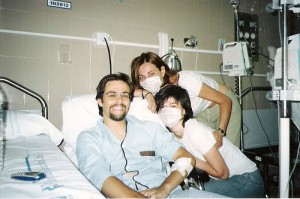
Finding a qualified doctor who speaks your language can be the difference between life and death.
Whether you’re living or traveling overseas, finding a doctor can be a daunting task. For one, there are questions of reputation and quality. Then there is the language barrier. Finding the best doctor in the world won’t do you a lick of good if you can’t make yourself understood. Communication problems also increase your chance of suffering medical error.
There are several routes you can go to find a good doctor abroad. You can ask for recommendations from other expats, scour the internet for practices popular with foreigners or consult your health insurance provider. Perhaps the most straightforward is to register with the International Association for Medical Assistance to Travelers (IAMAT).
IAMAT is a free service dating to the 1960s. Its founder, Italian doctor Vincenzo Marcolongo, decided to create a medical resource for travelers after a critically-ill Canadian patient was referred to him by a non-English speaking colleague. Without Dr. Marcolongo’s help she probably would have died. The woman had mistakenly been prescribed medicine that destroys white blood cells in Anglo-Saxons!
Today IAMAT’s website offers a list of doctors, hospitals and clinics in 350 cities spread across 90 countries. All listed doctors are verified as licensed and in good standing in their country of residence. Most have studied in Europe or North America and all are fluent in English. Many speak two or more languages.
The issue with IAMAT is treatment cost. Signing up is free and so is viewing the listings. Getting care is a different story.
Members in need of medical help (for any condition) can receive a medical consultation at an IAMAT-affiliated clinic for a flat fee of USD 100 (house/hotel calls cost USD 150, night and holiday calls USD 170). But that only covers the consultation. Expenses related to blood tests, hospitalization or X-rays must be paid either out of pocket or by your international health insurer. And trust us they’ll add up in an emergency.
Because of the cost we recommend expats use IAMAT primarily for creating a list of competent doctors. Before actually deciding on treatment, however, verify the doctors or clinics are covered under your medical insurance plan. Once you receive a proper diagnosis you may prefer to be treated at a covered facility. This two-pronged approach will help you control costs while still ensuring quality care.
